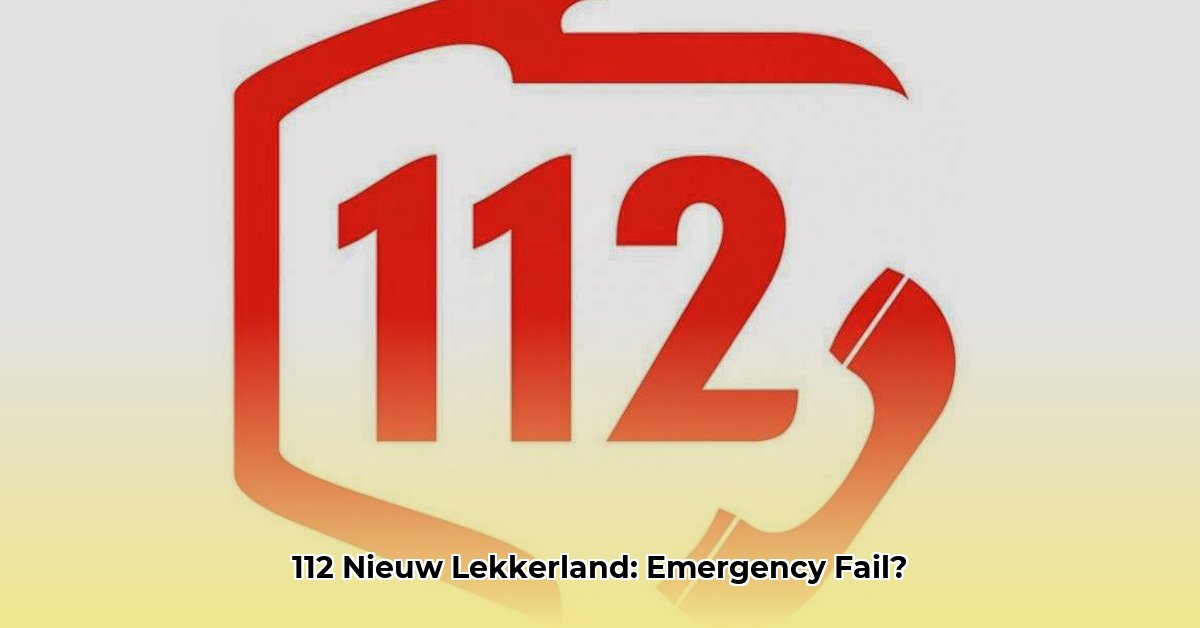
Understanding Emergency Response in Nieuw-Lekkerland: A Preliminary Assessment
This report provides a preliminary assessment of emergency response efficiency in Nieuw-Lekkerland. Currently, data limitations prevent a comprehensive evaluation. While the 112 emergency number is operational, critical information regarding response times, resource allocation, and incident types is lacking. This initial report highlights the need for further investigation and outlines actionable steps to gather the necessary data. The ultimate goal is to improve the speed and effectiveness of emergency services for the community's safety and well-being.
The Current State of Emergency Response: Data Gaps and Limitations
We acknowledge significant data limitations in this preliminary assessment. While the 112 emergency system is confirmed as functional in Nieuw-Lekkerland (as evidenced by websites such as 112-nu.nl and oozo.nl), crucial performance indicators remain unavailable. This lack of information includes response times, resource availability (number and distribution of ambulances, fire engines, and police vehicles), and the frequency and types of emergency calls. This absence of specific, quantifiable data drastically limits our capacity for detailed analysis. Without accurate data, we cannot definitively assess the system's current effectiveness.
Critical Data Needs: Filling the Knowledge Gaps
To accurately assess and improve emergency response in Nieuw-Lekkerland, the following data is urgently required:
- Detailed Call Logs: Comprehensive records of emergency calls, including timestamp of call, location, type of incident, time of arrival of first responders, and overall response time. This granular data will allow for analysis of response time trends and identification of potential bottlenecks.
- Resource Inventory and Deployment: A complete inventory of available emergency resources (ambulances, fire trucks, police vehicles), their locations, and their deployment patterns. This helps assess resource adequacy and potential geographical disparities in service provision.
- Incident Categorization: Systematic categorization of emergency calls by type (medical, fire, accidents, etc.). This allows us to understand the demand placed on different aspects of the emergency system and potential resource allocation issues.
Actionable Steps: A Path Towards Improvement
Addressing the current data deficiencies requires a collaborative effort involving local authorities and emergency services. The following steps are proposed:
Formal Data Request: The municipality of Nieuw-Lekkerland should formally request comprehensive data on 112 calls and emergency resource deployment from all relevant agencies (ambulance services, fire department, police).
Internal Service Reviews: Each emergency service provider should conduct an internal review of their processes, including call handling, resource allocation, and response protocols. This review should include assessing response times, identifying any recurring issues or bottlenecks, and exploring potential improvements in their operational efficiency.
Community Engagement and Feedback: A public awareness campaign should increase understanding of the 112 system's usage and available resources. Gathering feedback from residents can provide valuable insights and identify areas for improvement that official data might miss.
Data Driven Strategic Planning: Upon receiving and analysing the comprehensive data from steps 1 and 2, a strategic plan for optimising emergency response in Nieuw-Lekkerland can be formulated. This plan would be tailored to address specific weaknesses revealed by the data analysis.
The Importance of Efficient Emergency Response: A Matter of Life and Death
Efficient emergency response is not merely a matter of convenience; it's a matter of life and death. Delays in response can have devastating consequences, particularly in time-sensitive situations such as heart attacks or serious accidents. A well-functioning emergency response system is vital for public safety and contributes significantly to the overall wellbeing of the community. Improved response times save lives and reduces the severity of injuries and property damage. This is a fundamental aspect of good governance and community welfare.
Conclusion: A Call to Action
This report serves as a call for action. The current lack of data prevents a thorough evaluation of emergency response efficiency in Nieuw-Lekkerland. By implementing the proposed steps and gathering the necessary data, we can work towards improving the system and ensuring the safety and well-being of the community. This requires a collaborative effort with a focus on data-driven decision-making and a commitment to continuous improvement.